This attractive-looking inn has been a feature of Salisbury Street for more than 100 years. Designated a grade II listed building in 1988, The Bell was built exactly 80 years earlier. Local trade directories published in the early 20th century refer to it as the Bell Inn or Bell Hotel, with ‘first-class accommodation for families and tourists; wines & spirits of best brands, RAC, excellent stabling, motor garage’ was reached through a large carriage arch, with gates.
Photographs and text about the history of The Bell.
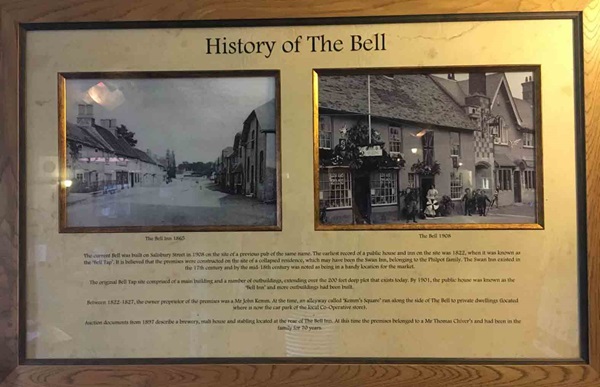
The text reads: The current Bell was built on Salisbury Street in 1908 on the site of a previous pub of the same name. The earliest record of a public house and inn on the site was 1822, when it was known as The Bell Tap, it is believed that the premises were constructed on the site of a collapsed residence, which may have been The Swan Inn, belonging to the Philpot family. The Swan Inn existed in the 17th century and by the mid 18th century was noted as being in a handy location for the market.
The original Bell Tap site comprised of a main building and a number of outbuildings, extending over the 200 feet deep plot that exists today. By 1901, the public house was known as The Bell Inn and more outbuildings had been built.
Between 1822-27, the owner proprietor of the premises was a Mr John Kemm. At the time, an alleyway called Kemm’s Square ran alongside of The Bell to private dwellings (located where is now the car park of the local Co-Operative store).
Auction documents from 1897 describe a brewery, malt house and stabling located at the rear of The Bell Inn. At this time the premises belonged to a Mr Thomas Chivers and had been in the family for 70 years.
A poster advertising the sale of The Bell Inn.
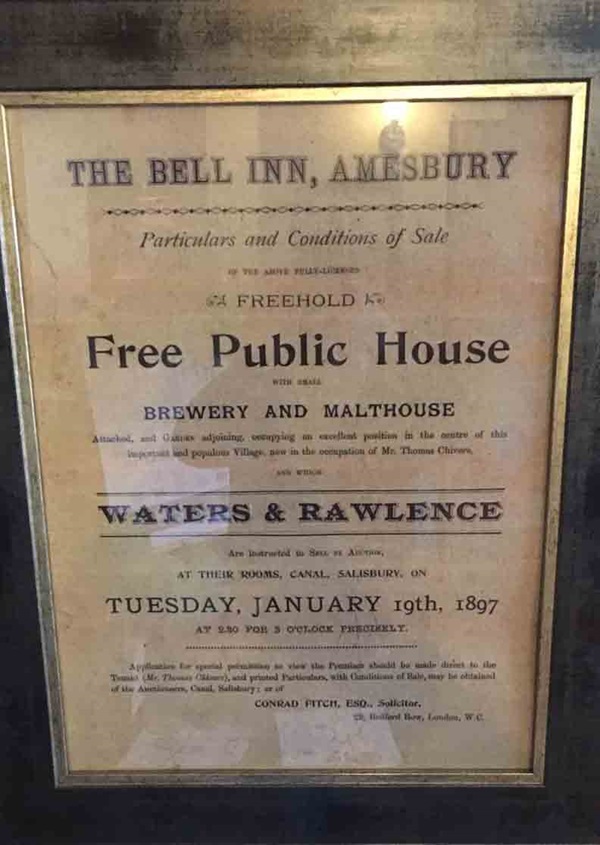
An illustration and text about clay pipes in Amesbury, accompanied by examples.
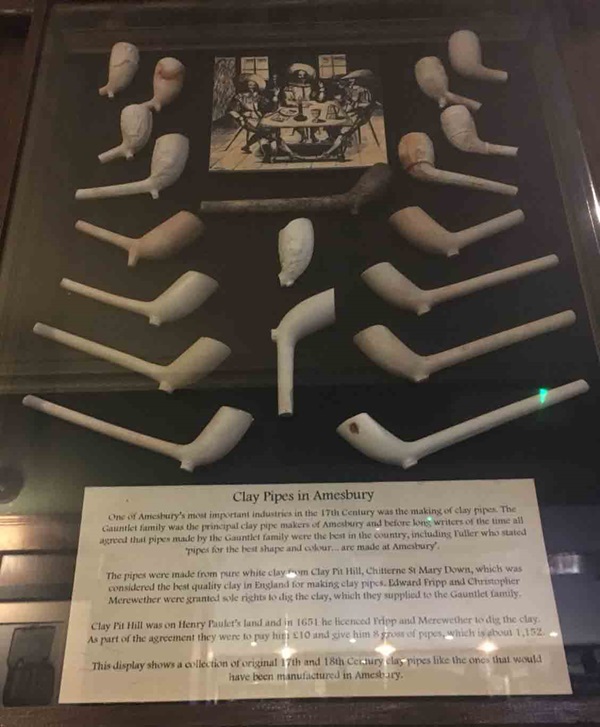
The text reads: One of Amesbury’s most important industries in the 17th century was the making of clay pipes. The Gauntlet family was the principal clay pipe makers of Amesbury and before long writers of the time all agreed that pipes made by the Gauntlet family were the best in the country, including Fuller who stated “pipes for the best shape and colour… are made at Amesbury”.
The pipes were made from pure white clay from Clay Pit Hill, Chitterne St Mary Down, which was considered the best quality clay in England for making clay pipes. Edward Fripp and Christopher Merewether were granted sole rights to dig the clay, which they supplied to the Gauntlet family.
Clay Pit Hill was on Henry Paulet’s land and in 1651 he licensed Fripp and Mereweather to dig the clay. As part of the agreement they were to pay him £10 and give him 8 gross of pipes, which is about 1,152.
This display shows a collection of original 17th and 18th century clay pipes like the ones that would have been manufactured in Amesbury.
Photographs of visitors to Stonehenge.
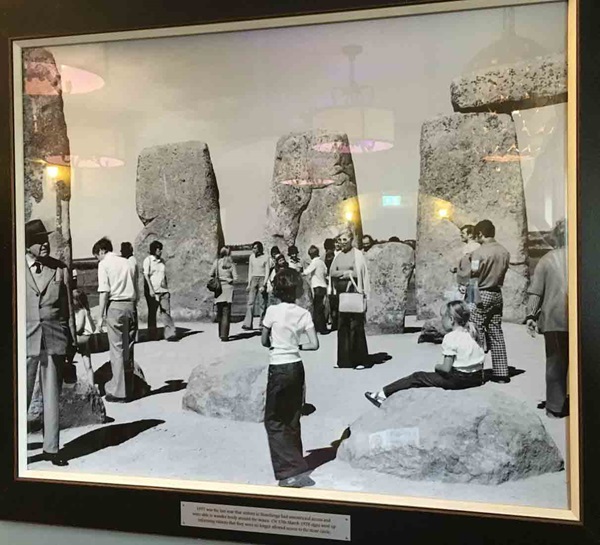
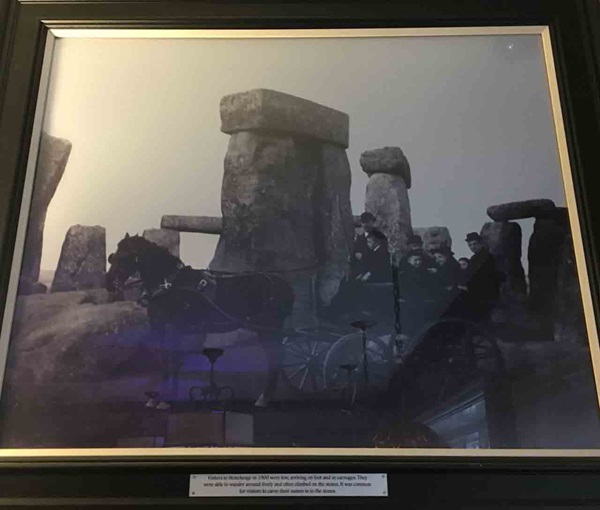
Visitors to Stonehenge in 1900 were few, arriving on foot and in carriages. They were able to wander around freely and often climbed on the stones. It was common for visitors to carve their names in to the stones.
A photograph of the Blue Eagles.
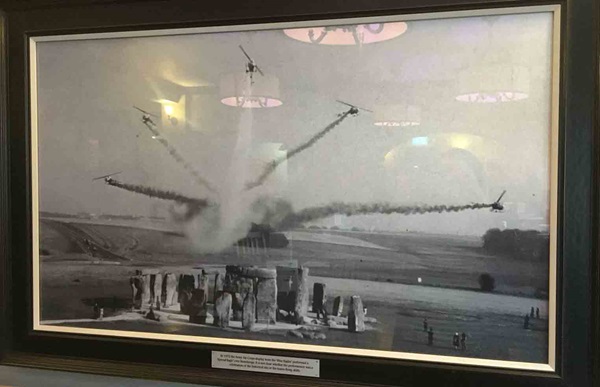
In 1972 the Army Air Corps display team the Blue Eagles performed a ‘Spread Eagle’ over Stonehenge. It is not clear whether the performance was a celebration of the historical site or the teams flying skills.
An illustration of Amesbury Abbey from the south west in 1805.
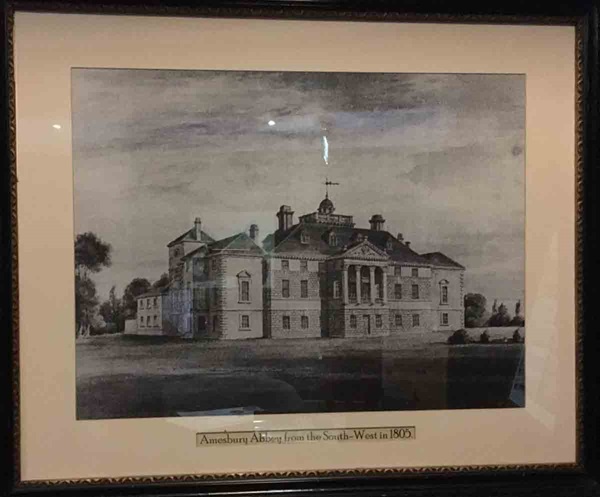
A photograph of the post office, 1910.
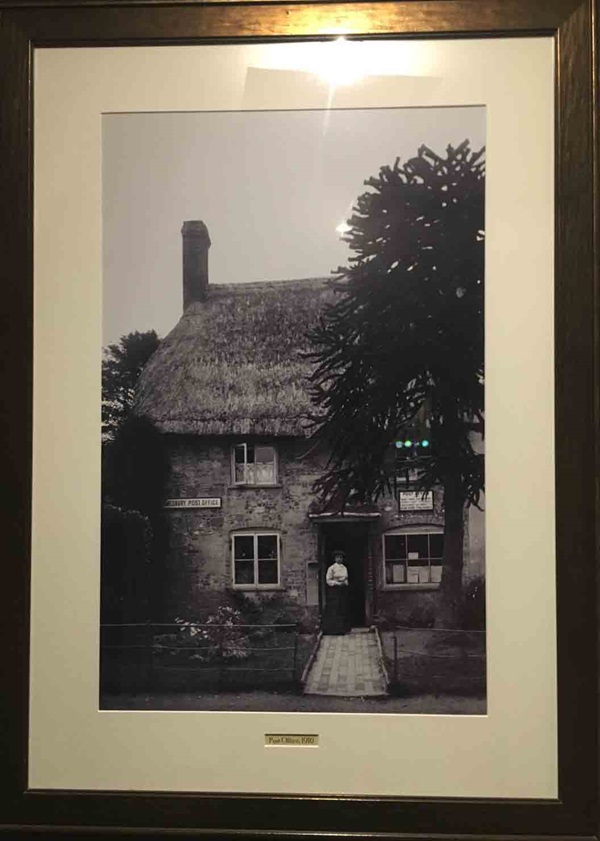
A photograph of High Street, Amesbury, c1927.
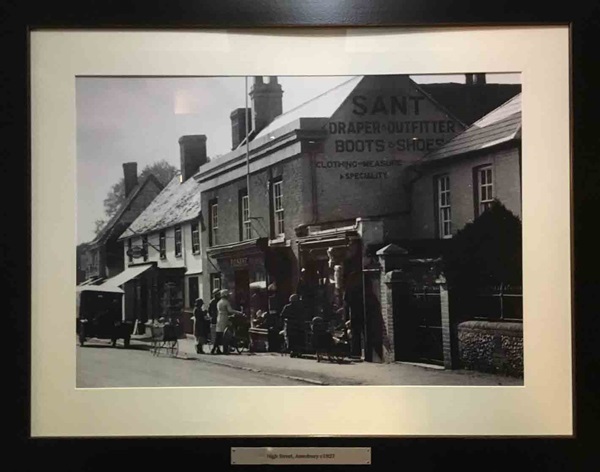
A photograph of the staff at the NAAFI office in Amesbury, 1949.

Staff at the NAAFI office were responsible for running recreational establishments for the British Armed Forces and to sell goods to servicemen and their families.
A photograph of The Bell, Amesbury, 1905.
External photograph of the building – main entrance.
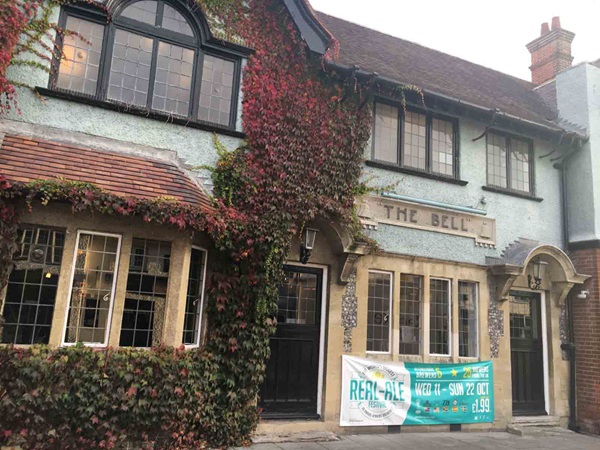
If you have information on the history of this pub, then we’d like you to share it with us. Please e-mail all information to: pubhistories@jdwetherspoon.co.uk